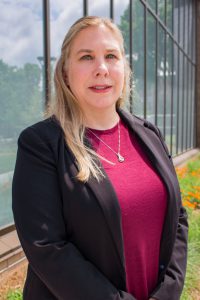
The Journey Begins
The doctoral journey began with the desire to help students thrive and to implement change in programs and policies that are most beneficial to fostering student success. It became clear that this journey would be challenging, but not impossible. The cohort model of doctoral study at Winona State University cultivates success by encouraging engagement and collaboration (Holmes et al., 2016). Getting to know students personally and professionally creates a strong support network and provides a solid sense of connection and community (Holmes et al., 2016), making attrition less likely to occur (Santicola, 2013). Through activities, assignments, and residency, WSU Doctoral Cohort 1 is now a family. Students in academic residency shared excitement about the journey ahead and will support each other to the finish line, no matter the challenges along the way.
Holmes, B., McAuley Brown, L. T., Parker, D. M., Mann, J., Woods, E. L., Gibson, J. A., … Hall, D. (2016). Decoding the persistence and engagement patterns of doctoral students who finish. Proceedings of the 2016 International Education Conference, 311-1 – 311-11. ISNN: 2157-9660.
Santicola, L. (2013). Pressing on: Persistence through a doctoral cohort program in education. Contemporary Issues in Education Research, 6(2), 253-264.
Problem of Practice
The number of students with disabilities entering college is rising (National Center for Educational Statistics, 2019). Despite the increase, institutions of higher education have not adequately addressed barriers to the success of students with disabilities. Many educational institutions focus solely on legal access and accommodation, enabling a system of exclusion, oppression, and attrition, especially for students with invisible disabilities (Evans, Broido, Brown, & Wilke, 2017). Students with invisible disabilities are often strong academically but struggle with other aspects of pursuing higher education, such as organizational skills, seeking help, emotional well-being, and campus engagement (Oslund, 2014). Students deserve equal opportunities for success, so it is imperative for educators to improve inclusion and support for students with invisible disabilities.
Evans, N.J., Broido, E.M., Brown, K.R., Wilke, A.K. (2017). Disability in higher education: A social justice approach. San Francisco, CA: Jossey-Bass.
Oslund, C. (2014). Supporting college and university students with invisible disabilities: A guide for faculty and staff working with students with autism, AD/HD, language processing disorders, anxiety, and mental illness. Philadelphia, PA: Jessica Kingsley Publishers.
U.S. Department of Education, National Center for Education Statistics. (2019). Digest of Education Statistics, 2017 (2018-070), Chapter 3.
Research Questions
Increasing numbers of students with disabilities are enrolling in post-secondary education (National Center for Education Statistics, 2019). The diversity of disabilities is also increasing, with a rising number of students entering with an invisible disability (Oslund, 2014). Students with invisible disabilities often do not receive the support they need to be successful in their education, nor do they know how to seek help on their own (Belch, 2011). Given this reality, higher education institutes must provide enhanced support services for students with invisible disabilities.
There are two working research questions in the initial exploration of this problem:
RQ1: How can institutions of higher education improve student support systems to better serve and engage students in learning with an invisible disability?
RQ2: How can students in higher education learn to better advocate for themselves and employ help-seeking behaviors that will lead to educational success?
Belch, H. (2011). Understanding the experience of students with psychiatric disabilities: A foundation for creating conditions of support and success. New Directions for Student Services, 134, 73-84.
Oslund, C. (2014). Supporting college and university students with invisible disabilities: A guide for faculty and staff working with students with autism, AD/HD, language processing disorders, anxiety, and mental illness. Philadelphia, PA: Jessica Kingsley Publishers.
U.S. Department of Education, National Center for Education Statistics. (2019). Digest of Education Statistics, 2017 (2018-070), Chapter 3.